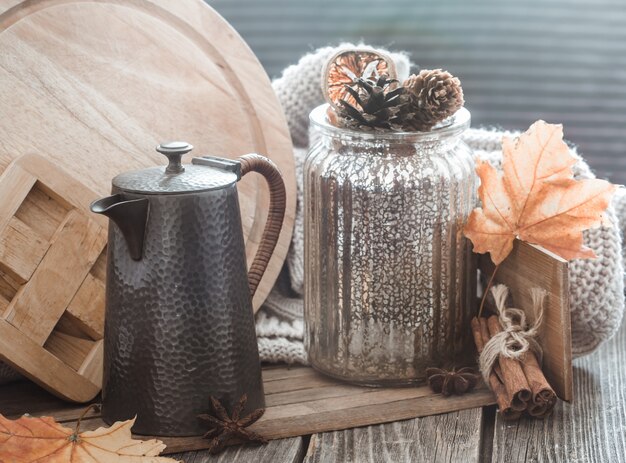
Sponsored article
Transforming your kitchen into a warm, inviting space can be as simple as integrating the delightful aromas and lush greenery of seasonal herbs. These kitchen staples don’t just bring vibrancy to your meals, but also infuse your home with a touch of nature’s charm. In this article, we’ll dive into the best herbs to choose for each season, tips on growing them indoors, and ways to incorporate them into your culinary creations, allowing you to embrace a cozy kitchen atmosphere all year round.
Choosing the right seasonal herbs is an essential step in creating a cozy atmosphere in your kitchen. As the seasons shift, so too does the variety of fresh herbs available, each offering unique scents and flavors that can transform your cooking space. In spring and summer, consider integrating fresh herbs like basil, mint, and dill into your kitchen ambiance. These kitchen herbs not only provide a vibrant splash of green but also release invigorating aromas that uplift the senses. As autumn and winter arrive, switch to robust, warming herbs like rosemary, sage, and thyme, which offer comforting, earthy notes perfect for a snug kitchen retreat. Tailoring your herb selection to the season not only ensures peak flavor and freshness but also enhances the sensory experience of your space.
Embracing seasonal herbs benefits both the environment and your cooking. By selecting herbs that are naturally in season, you align with local agricultural cycles and reduce the carbon footprint associated with transported goods. Fresh herbs harvested in their ideal growing period generally boast higher nutrient content, enriching your culinary creations with more flavor and wholesomeness. They also enable you to create simple yet delightful herbal arrangements that serve as lovely, functional decorations throughout the kitchen. Ultimately, dedicating attention to your herb selection can elevate your cooking and transform your kitchen into a welcoming sanctuary of seasonal delights.
Transforming your kitchen into a warm and inviting space can be effortlessly achieved by creating an indoor herb garden. Growing herbs indoors not only adds a splash of greenery but also a fresh supply of aromatic flavors. Herb care is crucial for their thriving presence, which begins with selecting the right spot. Ensure that the location receives ample natural light, as most herbs like basil, cilantro, and rosemary require at least six hours of sunlight daily. If your kitchen lacks natural lighting, supplement with LED grow lights to mimic the preferred conditions. The choice of container also plays a vital role in herb maintenance. Ensure that pots have proper drainage to prevent water retention that could lead to root rot.
In addition, pots should be spacious enough to allow roots to spread, promoting healthy growth. When it comes to watering, adopt the practice of checking the soil moisture before watering your herbs. Most herbs prefer the soil to be damp but not excessively wet. Watering once or twice a week is typically ideal, but consider your kitchen’s humidity levels. Raising seasonal herbs indoors is a delightful endeavor, bringing both functionality and charm to your kitchen. With care focused on lighting, watering, and container selection, your indoor herb garden will flourish, enhancing the cozy atmosphere you desire.
Seasonal herbs are a delightful addition to any kitchen, offering a burst of flavor that transforms ordinary meals into extraordinary culinary experiences. Cooking with herbs like rosemary, thyme, and basil not only enhances flavors but also imbues a comforting aroma that envelopes your home, creating a truly cozy atmosphere. By incorporating these herbs into your daily cooking routine, you can elevate even the simplest of dishes. Consider herb recipes such as rosemary-infused roasted potatoes or a basil and mint pesto drizzled over pasta for a succulent twist.
Herbal cuisine is not restricted to savory dishes alone. Experiment with desserts by adding a hint of thyme to lemon tarts or lavender to shortbreads, bringing a unique depth of flavor that’s both unexpected and delightful. Herbal teas made from fresh mint or chamomile can offer a soothing end to any meal, enhancing the overall dining experience. Embrace the versatility of seasonal herbs and allow them to inspire new flavor enhancements in your everyday cooking repertoire.